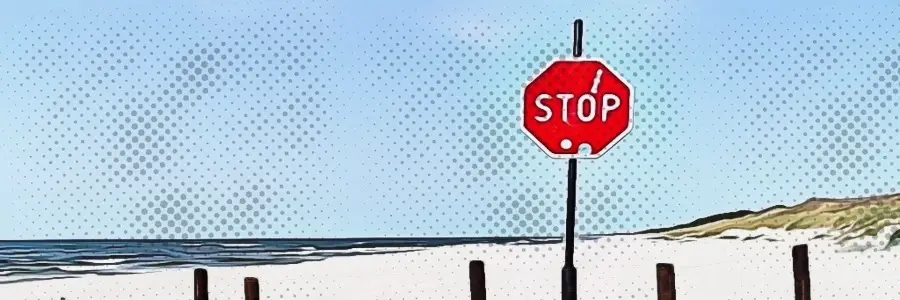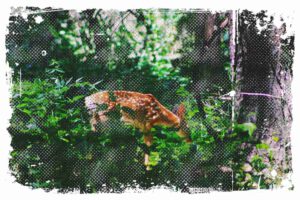Poland shares a border with a small territory of the Russian Federation. This Russian territory is an exclave on the Baltic Sea – the Kaliningrad. The whole part of Russia that shares a border with Poland is called the Kaliningrad Region. Surprisingly, this region has no direct land connection with the main part of the Russian Federation.

Why does Poland share a border with Russia?
The reason that this region was created is the result of the post-war arrangments and the split of the former territory of East Prussia between communist Poland and the Soviet Union. The course of the current border was formed in 1945 and has remained this way since then. The capital city „Kaliningrad” also has the Polish name „Królewiec” and the German one „Königsberg”.
How long is the border between Poland and Russia?
The Polish-Russian border on land is 210 kilometers long. There are 3 railroad border checkpoints and 4 road border crossings. Poland also has a sea border with Russia, which is 22 kilometers long. So, altogether, the border is 232,4 km long.

Kaliningrad Oblast (District)
Kaliningrad is an external territory of the Russian Federation. This is an area surrounded by the lands of other countries that has no direct land connection to the main part of Russia. The Polish-Russian border is located to the north of the Mazurian Lake District. Its land border is 210 kilometers long. Moreover, the Kaliningrad Region also shares a border with Lithuania. The area of the Russian Region is 15.1 thousand square kilometers. Kaliningrad is inhabited by 950,000 people. The distance between Kaliningrad and the Russian mainland, measured in straight line, is 362 km.

Kaliningrad is a major seaport on the sea-land route between Western and Eastern Europe. The city is visited by cruise ships from Poland and other countries. Tourists are drawn to the Baltic beaches, which are very rich in amber.
Since When Is It Legal To Cross The Border?
Until 1990, crossing the border between Kaliningrad and Poland was nearly impossible. This region was a closed and internal part of Soviet Russia for decades, with limited access granted to its own citizens from other parts of the Soviet Union. Border crossings were strictly monitored and permitted only when both countries agreed. That situation was established in 1965 and didn’t change till the 1990, when the transformation took place in Europe. In 1990, border traffic reached its highest level in decades. According to the register, the border was crossed 80.000 times that year.
Officially, the Polish-Russian border with Kaliningrad Oblast was opened in 1992. The railway route between Kaliningrad and the Polish city of Braniewo was launched after 47 years. A year later, the trains from Kalinigrad reached their destination in Gdynia. The border traffic in 1992 was almost four times higher than in 1991. By the year 1997, almost 5 million travellers crossed the Polish-Russian border.
According to statistics, during the period 1997–2002, most of the people crossed the Polish-Russian border in order to buy and trade illegal goods. This situation was strictly related to the high unemployment rate in the Kaliningrad district during this year. According to the data, 90% of the „travellers” coming from Russia stayed in Poland for less than 1 day.
The interesting fact about those who crossed the Russian border is their nationality. In fact, during the period 1990–2008, the majority of those who crossed it were Polish citizens. To be more specific, the figure was 51% to 62%. The only exceptions during these years were 1991-1992 and 2000-2001. The majority of travelers were Russians these years.
Following Shengen
The tendency changed in 2007. It was the year in which Poland was accepted into the Shengen Area. Since that time, fewer Polish travellers have crossed the Polish-Russian border. In 2008, the share was 85.4% for Russians. The rest of the travellers were a group represented by 75 nations, who came from 6 continents. Germans made up the vast majority of them.
Is The Border Between Poland and Russia Open?

In 2016, local border traffic between the oblast and Poland was suspended. It was due to the NATO summit and the Pope’s trip to Poland. In 2020, border traffic with Kaliningrad was even more restricted due to the pandemic. It is difficult to see any impact of the Russian aggression against Ukraine on traffic at the border, since cross-border population exchange has already vanished. In the current situation, the neighborhood of Russia appears to be more problematic rather than beneficial. It is also symbolic that Ukrainian citizens escaping the war are not choosing to travel to the northern regions of Poland because of their direct neighborhood with the Russian Federation.
Border traffic is temporarily suspended at the following road border crossing points:
- Border with Russia – Gronowo, Gołdap
- Border with Belarus – Połowce, Sławatycze
- For more information please visit this website as it provides real time data.
Where does Poland share a border with Russia?
The border with Russia runs from the area around Wiżajn, through the Romincka Forest, parallel north from the towns of Goldap, Wegorzewo, Bartoszyce, Braniewo, crosses the Vistula Lagoon and ends at the Vistula Spit in the town of Piaski.
With whom does Russia also shares it’s border?
Russia borders Norway (196 km), Finland (1313 km), Estonia (290 km), Latvia (292 km), Belarus (959 km), Ukraine (1576 km), Georgia (723 km), Azerbaijan (284 km), Kazakhstan (6846 km), China (3645 km), Mongolia (3441 km), North Korea (17.5 km), as well as Lithuania (227 km) and Poland (210 km)
Who determined Poland’s borders with Russia after World War II?
It was not the Poles who ultimately decided about the future of the eastern lands and the shape of the borders. All decisions were made at the conferences by the so-called Big Three. The Big Three were formed by USSR leader Joseph Stalin, US President Franklin D. Roosevelt and British Prime Minister Winston Churchill.
Bibliography
- https://en.wikipedia.org/wiki/Poland%E2%80%93Russia_border
- https://www.gov.pl/web/border/oficial-information-on-east-border
- https://granica.gov.pl/?v=en




